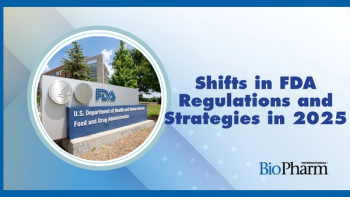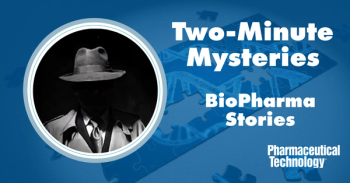
Industry Responds to FDA Metrics Program
Manufacturers seek gradual rollout of more targeted FDA quality metrics program.
After nearly three years of workshops, white papers, and pilot tests, one might expect some agreement between FDA and manufacturers of drugs and biologics on how to measure the quality and reliability of production systems and resulting products. A draft
But industry’s initial response, as presented at an FDA public meeting held August 24, 2015, is that the timeframe for reporting and specific data requests are “not reasonable,” said David Gaugh, senior vice-president of the Generic Pharmaceutical Association (GPhA). Genentech Vice-President Diane Hagerty, representing the International Society for Pharmaceutical Engineering (ISPE), advised FDA to “start small, learn, and evolve” the metrics program. Manufacturers want FDA to phase in the initiative, starting with higher-risk facilities and products, and to defer reporting on APIs until later. Both FDA and industry need to understand the volume of data involved and how FDA will use that information before specifics become final.
Furthermore, Camille Jackson of the Pharmaceutical Research and Manufacturers of America (PhRMA) questioned whether FDA’s use of guidance, as opposed to more formal notice-and-comment rulemaking, provides sufficient authority for the agency to require metrics reporting in advance of inspections, while Gaugh similarly speculated if FDA can require metrics reporting by foreign companies; if not, that could encourage firms to shift drug production overseas.
Excipient makers objected to the idea of collecting metrics on “high-risk” excipients, while API makers raised a host of questions about how they could provide measures on products made for multiple drug companies. Non-prescription drug firms want to limit initial metrics to high-risk medicines, as opposed to hand creams. And contract manufacturers voiced a range of concerns about what was a “reporting establishment” and how CMOs could report metrics on a facility making drugs for multiple clients.
Richard Johnson, president of the Parenteral Drug Association (PDA), seemed more optimistic that the FDA proposal is “a good place to start,” and that regulatory relief in inspections and post-approval changes are “key to driving this program.” Johnson also cited challenges in assessing the “quality culture” at companies and contradicted others on the basic issue of whether FDA should collect quality metrics by establishment for products or for products by establishment.
FDA officials were disappointed by all the objections and acknowledged that it needs to clarify definitions, how data will be used, and reporting relationships. The main aim of the program is to assist FDA in inspection scheduling and in efforts to avoid supply disruptions, and issuing final guidance “is a high priority,” said Russell Wesdyk, acting director of the Office of Surveillance in the Office of Pharmaceutical Quality. FDA wants to minimize the reporting burden of the program and won’t use metrics data in isolation to make regulatory decisions, he said, adding that a final guidance will not appear this year.
Newsletter
Stay at the forefront of biopharmaceutical innovation—subscribe to BioPharm International for expert insights on drug development, manufacturing, compliance, and more.





